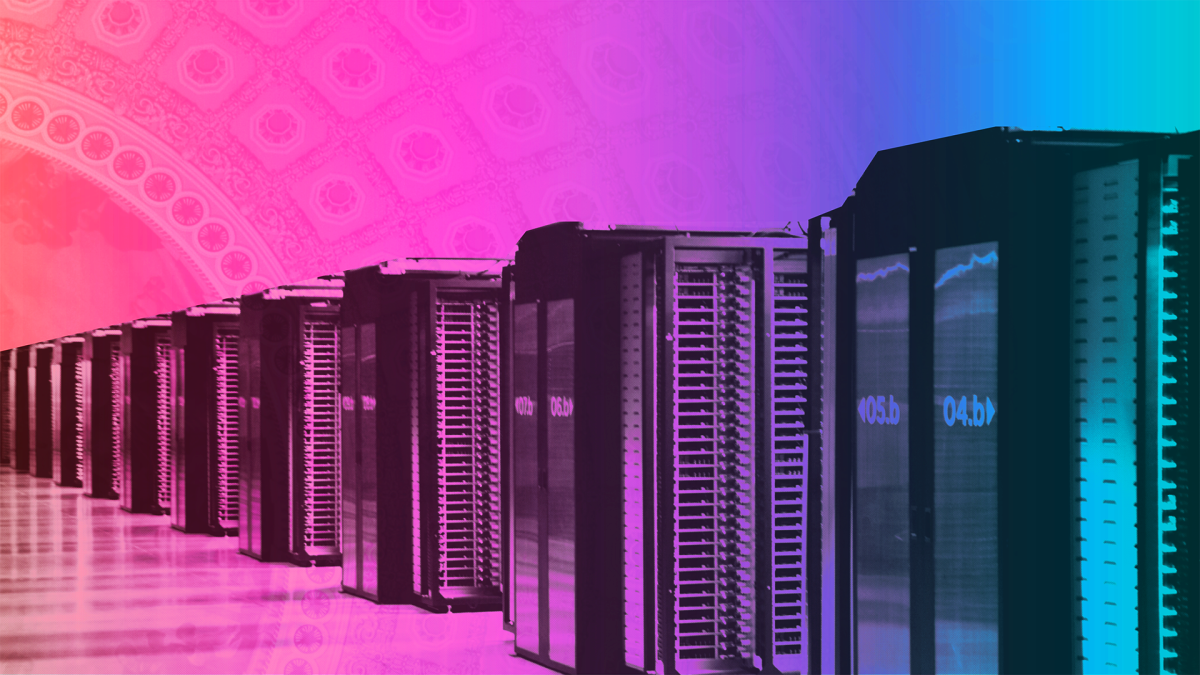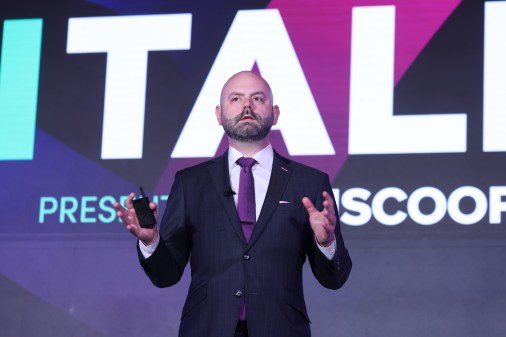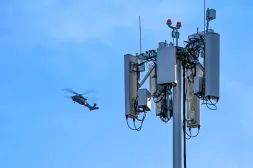The importance of spectrum sharing to the future of war

As the U.S. prepares for future conflict that will likely largely hinge on accelerating decision-making with data and modern technologies like artificial intelligence, it’s necessary that the Department of Defense has a system for dynamic spectrum sharing in place to facilitate that rapid flow of data, said one of the DOD’s top IT officials.
There’s much talk about how 5G mobile networks can speed data flow to enable AI and machine learning applications for the DOD; but before that can happen on a large scale, the department is going to have to find a way to share the limited existing electromagnetic spectrum dedicated to 5G with other commercial and non-defense industries, Dr. Kelly Fletcher, principal deputy CIO of the DOD, told FedScoop in an interview.
“As an American consumer, I’m really excited to have 5G. I’m excited to have it on my smartphone, on the weekend when I’m milling around my city. And we at DOD really, really want to enable that,” Fletcher said. “We really want folks here at home to be able to use 5G. And I really want to use 5G for our military folks, we want to provide it to them. But for all of this to work, we’re going to have to move into dynamic spectrum sharing.”
That means, in some cases, no one will outright own a piece of the spectrum. Instead, different entities will share it so as to not hamstring one another. The DOD is already experimenting with different structures and technologies to accomplish this in a smooth way in which it has freedom of action across the electromagnetic spectrum to support its network needs within the Joint All Domain Command and Control (JADC2) concept of operations.
“Instead of: ‘Oh, I operate in a certain chunk of the spectrum and I’m always living there and I’m always in that chunk of the spectrum and it’s 100% mine,’ we’re going to have to share and we’re going to have to share with industry and we’re going to have to figure out how to incentivize this and we’re going to have to figure out how to get the right technologies,” Fletcher said. “And that’s going to be critical for getting the right data to the right place.”
Fletcher’s comments come on the heels of an updated spectrum strategy the DOD released in October 2020. The strategy’s core hypothesis is that “without the capabilities to assert [electromagnetic spectrum] superiority, the nation’s economic and national security will be exposed to undue and significant risk.”
The DOD Office of the CIO, which Fletcher helps lead with John Sherman, is responsible for the implementation of that strategy.
Commenting on the strategy in 2020, then-Vice Chairman of the Joint Chiefs of Staff John Hyten said: “The department is dedicated to a unified, holistic electromagnetic spectrum operations approach which ensures our freedom of action in the EMS at the time and place of our choosing. We cannot expect military success in any domain if we fail to take bold action to ensure that the United States and its allies have freedom to act in the spectrum. Implementing the EMS Superiority Strategy enables us to take that bold action so we are able to dominate the spectrum in all domains and, if challenged, win against our enemies.”
The DOD has experiments underway to test new models for spectrum sharing. Additionally, contractor Peraton won an $18 million contract last October to develop a tool for the department to make its use of tactical networks simpler and more efficient.
On the topic of spectrum use and what’s ahead, Fletcher also said not to think just about “fiber in the ground” or traditional cell towers as the infrastructure to support a more dynamic, effective transfer of data to support military needs. Satellite communications are increasingly playing a role in this too as the DOD pushes further into space development.
“SATCOM is really, really important,” she said. “And as we look at the edge, and as we look at new technologies, transport is going to look a lot different than just fiber in the ground.”
Fletcher continued: “5g is incredibly exciting, and it’s because of what it will enable from a data and AI perspective. We’re very passionate about how do we get the right data to the right place at the right time. And a lot of the time, that’s using SATCOM, that’s not using fiber in the ground.”






